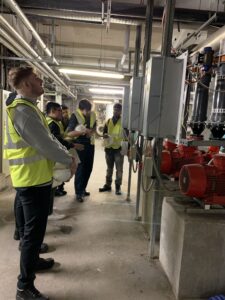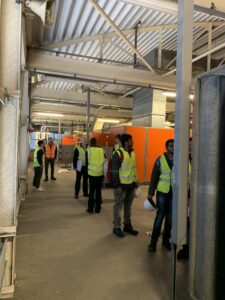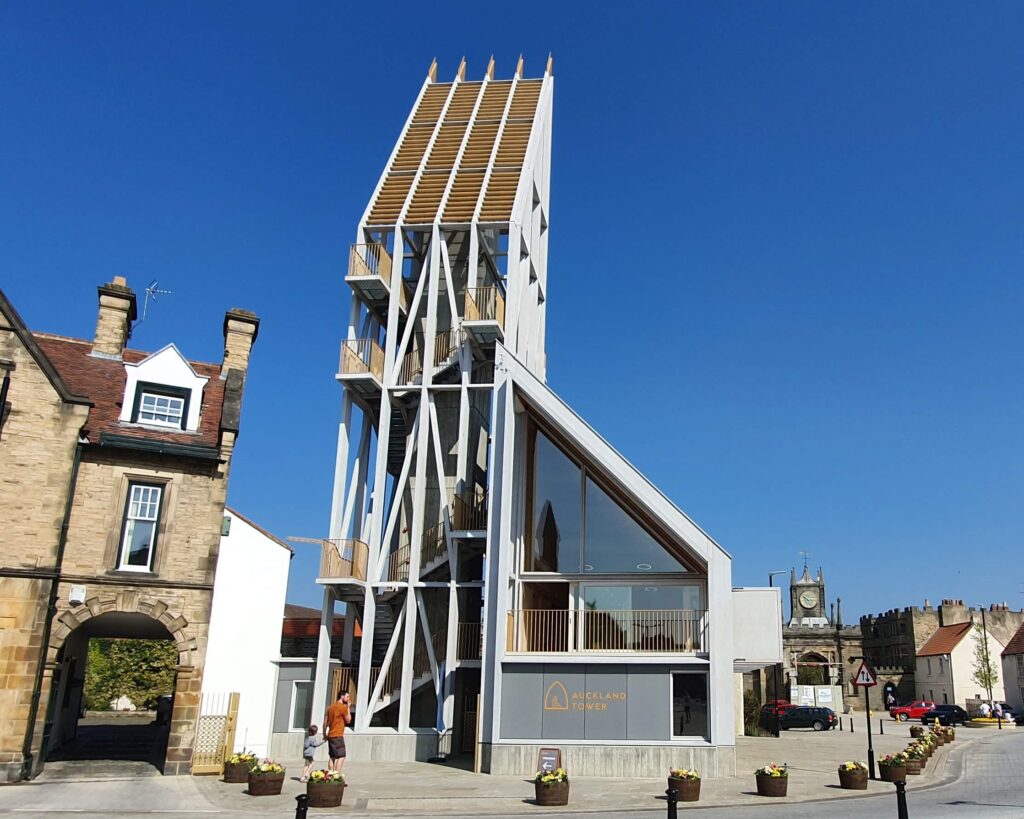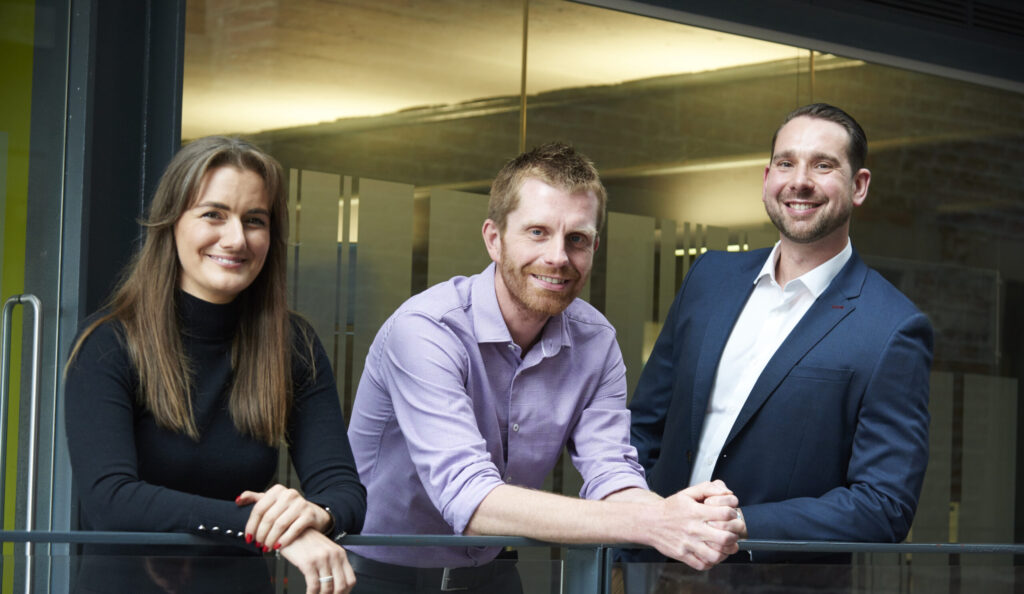As part of TGA’s efforts to promote Building Services Engineering to Engineering Graduates and to further supplement the presentations provided by TGA on the Public Sector Decarbonisation Scheme (PSDS) presentations at Northumbria University, the Architecture and Mechanical Engineering students were invited to visit East End Pool and Walker Dome. These are two of the sites that were touched upon during the presentations to the students.
The aim was to give the students an insider’s view into the varied scope of works that fall within the decarbonisation schemes. This is from the installation of photovoltaic panels to the integration of air-source heat pumps, both of which interconnecting into the existing building systems. By walking through and exploring the plant spaces hidden from public view, it was hoped that the students would gain a greater appreciation of the design and engineering process that goes into decarbonising existing buildings.
The students also had the opportunity to look past the concepts, theories and design ideas presented to them in the lecture theatre and learn from those delivering the projects on site, to understand the practical challenges they have to deal with to take these schemes from design, through construction and into operation.
The opportunity was also taken to share the important role such buildings have with the local communities that they serve, and why the PSDS projects were essential to ensure these existing buildings are fit for use as part of the decarbonising future of public buildings.
The site visits were well-received, with lots of interesting questions and clearly an interest in the ‘inner-workings’ of buildings and how they operate. Most questions were focussed on the main plant areas, services distribution and the plant space actually required to allow for buildings to function.
Due to the previous issues associated with getting students to live sites, for many who attended it was their first opportunity to take part in a site tour. Furthermore, many of the students who attended were working on various aspects of sustainable design as part of their projects or theses, so it was hoped that they not only found the experience interesting, but also that they can make use of what they have learnt as part of their academic endeavours.





